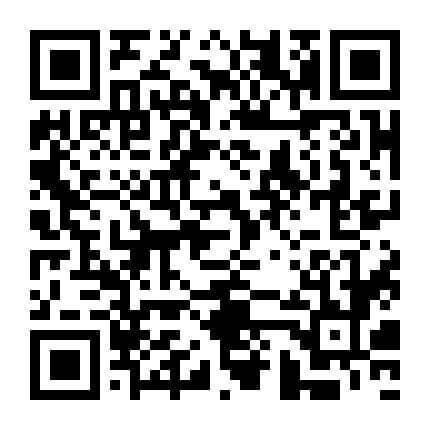2014年北京师范大学考博英语真题
- 1
- 0
- 6
摘要:希赛网英语考试频道为大家分享“历年北京师范大学考博英语真题汇总”,更多考博英语相关信息,请关注希赛网英语考试频道。
希赛网英语频道为同学们整理了北京师范大学考博英语真题.请同学们多多复习.专心备考。
Part I Reading Comprehension
Directions: There are six passages in this part. Each of the passages is followed by five questions or unfinished statements. For each of them there are four choices marked A9 B, C and D. Choose the best one and mark your answer on the ANSWER SHEET.
Passage One
Taken together, income, occupation, and education are good measures of people’s social standing. Using a layered model of stratification, most sociologists describe the class system in the United States as divided into several classes: upper, upper middle, middle, lower middle, and lower class. Each class is defined by characteristics such as income, occupational prestige, and educational attainment. The different groups are arrayed along a continuum with those with the most money, education, and prestige at the top and those with the least at the bottom. In the United States, the upper class owns the major share of corporate and personal wealth; it includes those who have held wealth for generations as well as those who have recently become rich. Only a very small proportion of people actually constitute the upper class, but they control vast amounts of wealth and power in the United States. They exercise enormous control throughout society. Most of their wealth is inherited.
Despite social myths to the contrary, the best predictor of future wealth is the family into which you are bom. Each year, the business magazine Forbes publishes a list of the “Forbes 400” 一- the four hundred wealthiest families and individuals in the country. Of all the wealth represented on the Forbes 400 list, more than half is inherited. Those on the list who could be called “self-made” were not typically of modest origins ; most inherited significant assets ( Forbes, 1997 ; Sklar and Collins, 1997 ). Those in the upper class with newly acquired wealth are known as the nouveau niche. Although they may have vast amounts of money, they are often not accepted into “old rich” circles. The upper middle class includes those with high incomes and high social prestige. They tend to be well-educated professionals or business executives. Their earnings can be quite high indeed—successful business executives can earn millions of dollars a year. It is difficult to estimate exactly how many people fall into this group because of the difficulty of drawing lines between the upper, upper middle, and middle class. Indeed, the upper middle class is often thought of as “middle class” because their lifestyle sets the standard to which many aspire, but this lifestyle is simply beyond the means of a majority of people in the United States.
The middle class is hard to define; in part, being “middle class” is more than just economic position. By far the majority of Americans identity themselves as middle class even though they vary widely in lifestyle and in resources at their disposal. But the idea that the United States is an open-class system leads many to think that the majority have a middle-class lifestyle because, in general, people tend not to want to recognize class distinctions in the United States. Thus, the middle class becomes the ubiquitous norm even though many who call themselves middle class have a tenuous hold on this class position.
In the hierarchy of social class, the lower middle class includes workers in the skilled trades and low-income bureaucratic workers, many of whom may actually define themselves as middle class. Examples are blue-collar workers (those in skilled trades who do manual labor) and many service
workers, such as secretaries, hairdressers, waitresses, police, and firefighters. Medium to low income, education, and occupational prestige define the lower middle class relative to the class groups above it. The term “lower” in this class designation refers to the relative position of the group in the stratification system, but it has a pejorative sound to many people, especially to people who are members of this class.
The lower class is composed primarily of the displaced and poor. People in this class have little formal education and are often unemployed or working in minimum-wage jobs. Forty percent of the poor work; 10 percent work year-round and full time—a proportion that has generally increased over time. Recently, the concept of the underclass has been added to the lower class. The underclass includes those who have been left behind by contemporary economic developments. Rejected from the economic system, those in the underclass may become dependent on public assistance or illegal activities.
1.Why does the author mention the “Forbes 400” in Paragraph 3?
A.To explain the meaning of the listing that appears every year.
B.To cast doubt on the claim that family income predicts individual wealth.
C.To give examples of successful people who have modest family connections.
D.To support the statement that most wealthy people inherit their money.
2.The author states that business and professional people with educational advantages are most often members of the.
A.lower middle class B. upper middle class C. nouveau riche D. upper class
3.Why do most people identify themselves as middle class in the United States?
A.They have about the same lifestyle as everyone else in the country.
B.They don’t really know how to define their status because it is unclear.
C.They prefer not to admit that there are class distinctions in the United States.
D.They identify themselves with the majority who have normal lifestyles.
4.What can be inferred about poor people in the United States?
A.They are not able to find entry-level jobs.
B.They work in jobs that require little education.
C.They are service workers and manual laborers.
D.They do not try to find employment.
5.According to Paragraph 7, why has the underclass emerged?
A.The new term was necessary because the lower class enjoyed a higher lifestyle than it had previously.
B.The increase in crime has supported a new class of people who live by engaging in illegal activities.
C.Changes in the economy have caused an entire class of people to survive by welfare or crime.
D.Minimum-wage jobs no longer support a class of people at a standard level in the economic system.
Passage Two
“ The word ‘ protection5 is no longer taboo ”. This short sentence, uttered by French President Nicolas Sarkozy late last month, may have launched a new era in economic history. Why? For decades, Western leaders have believed that lowering trade barriers and tariffs was a natural good. Doing so, they reasoned, would lead to greater economic efficiency and productivity, which in turn would improve human welfare. Championing free trade thus became a moral, not just an economic, cause. These leaders, of course, weren’t acting out of unselfishness. They knew their economies were the most competitive, so they’d profit most from liberalization. And developing countries feared that their economies would be swamped by superior Western productivity. Today, however, the tables have turned—though few acknowledge it. The West continues to preach free trade, but practices it less and less. Asia, meanwhile, continues to plead for special protection but practices more and more free trade. That’s why Sarkozy’s word was so important: he finally injected some honesty into the trade debate. The truth is that large parts of the West are losing faith in free trade, though few leaders admit it. Some economists are more honest. Paul Krugman is one of the few willing to acknowledge that protectionist arguments are returning. In the short run, there will be winners and losers will be in the West. Economists in the developed world used to love quoting Joseph Schumpeter, who said that “creative destruction” was an essential part of capitalist growth. But they always assumed that destruction would happen over there. When Western workers began losing jobs, suddenly their leaders began to lose faith in their principles. Things have yet to reverse completely. But there’s clearly a negative trend in Western theory and practice. A little hypocrisy is not in itself a serious problem. The real problem is that Western governments continue to insist that they retain control of the key global economic and financial institutions while drifting away from global liberalization. Look at what’s happening at the IMF (International Monetary Fund). The Europeans have demanded that they keep the post of managing director. But all too often, Western officials put their own interests above everyone else’s when they dominate these global institutions. The time has therefore come for the Asians—who are clearly the new winners in today’s global economy_■to provide more intellectual leadership in supporting free trade. Sadly, they have yet to do so. Unless Asians speak out, however, there’s a real danger that Adam Smith’s principles, which have brought so much good to the world, could gradually die. And that would leave all of us worse off, in one way or another.
6.It can be inferred that “ protection”( Line 1, Para. 1) means•
A.improving economic efficiencyB. ending the free-trade practice
C. lowering moral standardD. raising trade tariffs
7.The Western leaders preach free trade because.
A.it is beneficial to their economies
B.it is supported by developing countries
C.it makes them keep faith in their principles
D.it is advocated by Joseph Schumpeter and Adam Smith
8.By “the tables have turned”( Line 3-4, Para. 2) the author implies that•
A.the Western leaders have turned self-centered
B.the Asian leaders have become advocates of free trade
C.the developed economies have turned less competitive
D.the developing economies have become more independent
9.The Western economists used to like the idea of “creative destruction” because it.
A.set a long-term rather than short-term goal
B.was an essential part of capitalist development
C.entailed a positive rather than negative mentality
D.was meant to be the destruction of developing economics
10.The author uses “IMF” as an example to illustrate the point that,
A.European leaders are reluctant to admit they are hypocritical
B.there is an inconsistency between Western theory and practice
C.global institutions are not being led by true globalization advocates
D.European countries’ interests are being ignored by economic leaders
Passage Three
Growth, reproduction, and daily metabolism all require an organism to expend energy. The expenditure of energy is essentially a process of budgeting, just as finances are budgeted. If all of one’s money is spent on clothes, there may be none left to buy food or go to the movies. Similarly, a plant or animal cannot squander all its energy on growing a big body if none would be left over for reproduction, for this is the surest way to extinction. All organisms, therefore, allocate energy to growth, reproduction, maintenance, and storage. No choice is involved ; this allocation comes as part of the genetic package from the parents. Maintenance for a given body design of an organism is relatively constant. Storage is important, but ultimately that energy will be used for maintenance, reproduction, or growth. Therefore the principal differences in energy allocation are likely to be between growth and reproduction. Almost all of an organism’s energy can be diverted to reproduction, with very little allocated to building the body. Organisms at this extreme are “ opportunists ”. At the other extreme are “competitors”,almost all of whose resources are invested in building a huge body, with a bare minimum allocated to reproduction.
Dandelions are good examples of opportunists. Their seed heads raised just high enough above the ground to catch the wind, the plants are no bigger than they need be, their stems are hollow, and all the rigidity comes from their water content. Thus, a minimum investment has been made in the body that becomes a platform for seed dispersal. These very short-lived plants reproduce prolifically ; that is to say they provide a constant rain of seed in the neighborhood of parent plants. A new plant will spring up wherever a seed falls on a suitable soil surface, but because they do not build big bodies, they cannot compete with other plants for space, water, or sunlight. These plants are termed opportunists because they rely on their seeds,falling into settings where competing plants have been removed by natural processes, such as along an eroding riverbank, on landslips, or where a tree falls and creates a gap in the forest canopy.
Opportunists must constantly invade new areas to compensate for being* displaced by more competitive species. Human landscapes of lawns, fields, or flowerbeds provide settings with bare soil and a lack of competitors that are perfect habitats for colonization by opportunists. Hence, many of the
strongly opportunistic plants are the common weeds of fields and gardens. Because each individual is short-lived, the population of an opportunist species is likely to be adversely affected by drought, bad winters, or floods. If their population is tracked through time, it will be seen to be particularly unstable—soaring and plummeting in irregular cycles. The opposite of an opportunist is a competitor. These organisms tend to have big bodies, are long- lived ,and spend relatively little effort each year on reproduction. An oak tree is a good example of a competitor. A massive oak claims its ground for 200 years or more, outcompeting all other would-be canopy trees by casting a dense shade and drawing up any free water in the soil. The leaves of an oak tree taste foul because they are rich in tannins, a chemical that renders them distasteful or indigestible to many organisms. The tannins are part of the defense mechanism that is essential to longevity. Although oaks produce thousands of acorns, the investment in a crop of acorns is small compared with the energy spent on building leaves, trunk, and roots. Once an oak tree becomes established, it is likely to survive minor cycles of drought and even fire. A population of oaks is likely to be relatively stable through time, and its survival is likely to depend more on its ability to withstand the pressures of competition or predation than on its ability to take advantage of chance events. It should be noted, however, that the pure opportunist or pure competitor is rare in nature, as most species fall between the extremes of a continuum, exhibiting a blend of some opportunistic and some competitive characteristics.
11.The word “squander” in the passage is closest in meaning to.
A.extendB. transformC. activateD. waste
12.According to the passage,the classification of organisms as “opportunists” or “competitors” is determined by.
A.how the genetic information of an organism is stored and maintained
B.the way in which the organism invests its energy resources
C.whether the climate in which the organism lives is mild or extreme
D.the variety of natural resources the organism consumes in its environment
13.All of the following are mentioned in Paragraph 7 as contributions to the longevity of oak trees EXCEPT•
A.the capacity to create shade
B.leaves containing tannin
C.the ability to withstand mild droughts and fires
D.the large number of acorns the tree produces
14.According to the passage, oak trees are considered as competitors because.
A.they grow in the areas free of opportunities
B.they spend more energy on their leaves, trunks and roots than on their acorns
C.their population tends to increase or decrease irregular cycles
D.unlike other organisms, they do not need much water or sunlight
15.In Paragraph 7, the author suggests that most species of organisms.
A.are primarily opportunists
B.are primarily competitors
C.began as opportunists and evolved into competitors
D.have some characteristics of opportunists and some of competitors
Passage Four
Many literary detectives have pored over a great puzzle concerning the writer Marcel Proust: what happened in 1909? How did Contre Saint-Beuve, an essay attacking the methods of the critic Saint Beuve, turn into the start of the novel Remembrance of Things Past"! A recently published letter from Proust to the editor Vallette confirms that Fallois, the editor of the 1954 edition of Contre Saint-Beuve, made an essentially correct guess about the relationship of the essay to the novel. Fallois proposed that Proust had tried to begin a novel in 1908, abandoned it for what was to be a long demonstration of Saint-Beuve’s blindness to the real nature of great writing, found the essay giving rise to personal memories and fictional developments, and allowed these to take over in a steadily developing novel. Draft passages in Proust’s 1909 notebooks indicate that the transition from essay to novel began in Contre Saint-Beuve, when Proust introduced several examples to show the powerful influence that involuntary memory exerts over the creative imagination. In effect, in trying to demonstrate that the imagination is more profound and less submissive to the intellect than Saint-Beuve assumed, Proust elicited vital memories of his own and, finding subtle connections between them, began to amass the material for Remembrance. By August, Proust was writing to Vallette, informing him of his intention to develop the material as a novel. Maurice Bardeche, in Marcel Proust,Romancier, has shown the importance in the drafts of Remembrance of spontaneous and apparently random associations of Proust’s subconscious. As incidents and reflections occurred to Proust, he continually inserted new passages altering and expanding his narrative. But he found it difficult to control the drift of his inspiration. The very richness and complexity of the meaningful relationships that kept presenting and rearranging themselves on all levels, from abstract intelligence to profound dreamy feelings, made it difficult for Proust to set them out coherently. The beginning of control came when he saw how to connect the beginning and the end of his novel.
Intrigued by Proust’s claim that he had “begun and finished” Remembrance at the same time, Henri Bonnet discovered that parts of Remembrance’s last book were actually started in 1909. Already in that year, Proust had drafted descriptions of his novel’s characters in their old age that would appear in the final book of Remembrance, where the permanence of art is set against the ravages of time. The letter to Vallette, drafts of the essay and novel, and Bonnet’s researches establish in broad outline the process by which Proust generated his novel out of the ruins of his essay. But those of us who hoped, with Kolb, that Kolb’s newly published complete edition of Proust’s correspondence for 1909 would document the process in greater detail are disappointed. For until Proust was confident that he was at last in sight of a viable structure for Remembrance,he told few correspondents that he was producing anything more ambitious than Contre Saint-Beuve.
16.The passage is primarily concerned with.
A.the role of involuntary memory in Proust’s writing
B.evidence concerning the genesis of Proust’s novel Remembrance of Things Past
C.conflicting scholarly opinions about the value of studying the drafts of Remembrance of Things Past
D.Proust’s correspondence and what it reveals about Remembrance of Things Past
17.It can be inferred from the passage that all of the following are literary detectives who have tried, by means of either scholarship or criticism, to help solve the “great puzzle” mentioned in Line 1 EXCEPT•
A.BardecheB. BonnetC. FalloisD. Vallette
18.According to the passage, in drafts of Contre Saint-Beuve Proust set out to show that Saint- Beuve made which of the following mistakes as a critic?
I . Saint-Beuve made no effort to study the development of a novel through its drafts and revisions.
II. Saint-Beuve assigned too great a role in the creative process to a writer’s conscious intellect.
皿.Saint-Beuve concentrated too much on plots and not enough on imagery and other elements of style.
A.II onlyB. IH onlyC. I and II only D. I,II,and 皿
19.Which of the following best states the author’s attitude toward the information that scholars have gathered about Proust’s writing in 1909?
A.The author is disappointed that no new documents have come to light since Fallois’s speculations.
B.The author is dissatisfied because there are too many gaps and inconsistencies in the drafts.
C.The author is confident that Fallois’s 1954 guess has been proved largely correct, but regrets that still more detailed documentation concerning Proust’s transition from the essay to the novel has not emerged.
D.The author is satisfied that Fallois’s judgment was largely correct, but feels that Proust’s early work in designing and writing the novel was probably far more deliberate than Fallois’s description of the process would suggest.
20.The author of the passage implies that which of the following would be the LEAST useful source of information about Proust’s transition from working on Contre Saint-Beuve to having
a viable structure for Remembrance of Things Past?
A.Fallois’s comments in the 1954 edition of Contre Saint-Beuve.
B.Proust’s 1909 notebooks, including the drafts of Remembrance of Things Past.
C.Proust’s 1909 correspondence, excluding the letter to Vallette.
D.Bardeche’s Marcel Proust, Romancier.
Passage Five
Why do some desert plants grow tall and thin like organ pipes? Why do most trees in the tropics keep their leaves year round? Why in the Arctic tundra are there no trees at all? After many years without convincing general answers, we now know much about what sets the fashion in plant design. Using terminology more characteristic of a thermal engineer than of a botanist, we can think of plants as mechanisms that must balance their heat budgets. A plant by day is staked out under the Sun with no way of sheltering itself. All day long it absorbs heat. If it did not lose as much heat as it gained, then eventually it would die.
Plants get rid of their heat by wanning the air around them, by evaporating water, and by radiating heat to the atmosphere and the cold, black reaches of space temperature is tolerable for the processes of life. Plants in the Arctic tundra lie close to the ground in the thin layer of still air that clings there. A foot or two above the ground are the winds of Arctic cold. Tundra plants absorb heat from the Sun and tend to warm up; they probably balance most of their heat budgets by radiating heat to space, but also by wanning the still air that is trapped among them. As long as Arctic plants are close to the ground, they can balance their heat budgets. But if they should stretch up as a tree does, they would lift their working parts, their leaves, into the streaming Arctic winds. Then it is likely that the plants could not absorb enough heat from the Sun to avoid being cooled below a critical temperature. Your heat budget does not balance if you stand tall in the Arctic.
Such thinking also helps explain other characteristics of plant design. A desert plant faces the opposite problem from that of an Arctic plant —the danger of overheating. It is short of water and so cannot cool itself by evaporation without dehydrating. The familiar sticklike shape of desert plants
represents one of the solutions to this problem: the shape exposes the smallest possible surface to incoming solar radiation and provides the largest possible surface from which the plant can radiate heat. In tropical rain forests, by way of contrast, the scorching sun is not a problem for plants because there is sufficient water.
This working model allows us to connect the general characteristics of the forms of plants in different habitats with factors such as temperature, availability of water, and presence or absence of seasonal differences. Our Earth is covered with a patchwork quilt of meteorological conditions, and the patterns of this patchwork are faithfully reflected by the plants.
21.Which of the following characteristics of plants does the passage primarily focus on?
A.Their ability to grow equally well in all environments.
B.Their effects on the Earth’s atmosphere.
C.Their ability to store water for dry periods.
D.Their ability to balance heat intake and output.
22.According to the passage, which of the following is most responsible for preventing trees from growing tall in the Arctic?
A. The hard, frozen ground.B. The small amount of available sunshine.
C. The cold, destructive winds.D. The large amount of snow that falls each year.
23.The author suggests that the “sticklike shape of desert plants” in Line 3 (Paragraph 4) can be attributed to the.
A.inability of the plants to radiate heat to the air around them
B.presence of irregular seasonal differences in the desert
C.large surface area that the plants must expose to the Sun
D.extreme heat and aridity of the habitat
24.All of the following are mentioned in the passage as contributions to the plants,balancing their heat EXCEPT•
A. radiating heat to the atmosphereB. wanning the air around them
C. absorbing heat from the sunD. evaporating water
25.Which is the TRUE statement about the different plants?
A.Arctic plants expose the smallest possible surface to incoming solar radiation.
B.Tropical plants are usually not affected by the strong sunshine.
C.Desert plants grow densely close to the ground.
D.Plants in different regions show no relations to the seasons.
Passage Six
To conduct some forms of sleep research, we have to find a way to track sleepiness over the day. Some people might believe that measuring sleepiness is a fairly trivial task. Couldn’t you, for instance, simply count the number of times a person yawns during any given hour or so? In most people’s minds,yawning—that slow, exaggerated mouth opening with the long, deep inhalation of air, followed by a briefer exhalation—is the most obvious sign of sleepiness. It is a common behavior shared by many animals, including our pet dogs and cats but also crocodiles, snakes, birds, and even some fishes. It is certainly true that sleepy people tend to yawn more than wide-awake people. It is also true that people who say they are bored by what is happening at the moment will tend to yawn more frequently. However, whether yawning is a sign that you are getting ready for sleep or that you are successfully fighting off sleep is not known. Simply stretching your body, as you might do if you have been sitting in the same position for a long period of time, will often trigger a yawn.
Unfortunately, yawns don’t just indicate sleepiness. In some animals, yawning is a sign of stress. When a dog trainer sees a dog yawning in a dog obedience class, it is usually a sign that the animal is under a good deal of pressure. Perhaps the handler is pushing too hard or moving too fast for the dog to feel in control of the situation. A moment or two of play and then turning to another activity is usually enough to banish yawning for quite a while.
Yawning can also be a sign of stress in humans. Once, when observing airborne troops about to take their first parachute jump, I noticed that several of the soldiers were sitting in the plane and yawning. It was 10 a. m. , just after a coffee break, and I doubted that they were tired; I knew for a fact that they were far too nervous to be bored. When I asked about this, the officer in charge laughed and said it was really quite a common behavior, especially on the first jump. There is also a social aspect to yawning. Psychologists have placed actors in crowded rooms and auditoriums and had them deliberately yawn. Within moments, there is usually an increase in yawning by everyone else in the room. Similarly, people who watch films or videos of others yawning are more likely to yawn. Even just reading about yawning tends to stimulate people to yawn. The truth of the matter is that we really don’t know what purpose yawning serves. Scientists originally thought that the purpose of yawning was to increase the amount of oxygen in the blood or to release some accumulated carbon dioxide. We now know that this is not true, since increasing the concentration of carbon dioxide in the air seems not to make people more likely to yawn but to make them breathe faster to try to bring in more oxygen. On the other hand, breathing 100 percent pure oxygen does not seem to reduce the likelihood of yawning. Since yawning seems to be associated with a lot more than the need for sleep, we obviously have to find some other measure of sleepiness. Some researchers have simply tried to ask people how sleepy they feel at any time using some sort of self-rating scale. There are, however, problems with getting people to make these types of judgments. Sometimes people simply lie to the researchers when asked about how sleepy they are. This occurs because in many areas of society admitting that one is fatigued and sleepy is considered a mark of weakness or lack of ambition and drive. In other instances, people may admit they need four cups of coffee to make it through the morning, but it may never occur to them that this might be due to the fact that they are so sleepy that they need stimulation from caffeine to be able to do their required tasks. For these reasons, many researchers have developed an alternate method to determine how sleepy a person is. It is based upon a simple definition of sleep need: The greater your sleep need, or the sleepier you are, the faster you will fall asleep if given the opportunity to do so.
26.The question in Lines 3-4 (Paragraph 1) is based on which of the following assumptions?
A.Direct observation is the only reliable method of conducting sleep research.
B.People will yawn most frequently in the moments before they fall asleep.
C.There is a direct correlation between yawning and sleepiness.
D.Yawning is a behavior over which individuals exert little conscious control.
27.The author uses which of the following in the fourth paragraph?
A. Understatement. B. Anecdote.C. Analogy.D. Metaphor.
28.The author mentions the “coffee break” to emphasize that a.
A. brief respite was sorely neededB. given attitude was inappropriate
C. specific response was understandableD. certain behavior was unexpected
29.Which of the following, if true, would most directly disprove what “scientists originally thought” ?
A.Carbon dioxide does not affect people’s breathing rates.
B.Yawning does not reduce the need for sleep, though it may make a person feel less tired.
C.Because yawning brings more air into the lungs, it can increase the rate at which oxygen is absorbed.
D.People do not tend to yawn much at high altitudes, where oxygen levels in the air are low.
30.The passage as a whole is best characterized as.
A. informativeB. confessionalC. philosophicalD. argumentative
Part II Translation and Writing
Section A Translation
A: Translate the following into Chinese:
In comparison with the human world of past times, our world is highly complex. Because of its highly developed communications, events in every part of the globe and of human society are closely in- terconnected. There are no isolated disasters and there is no progress that does not help the progress of all.
This situation is reflected in the minds of men. The contents of men’s minds have also become worldwide in scope and complexity. It is not enough for a man, seeking the welfare of his own people and country, to consider his domestic situation in relation to his immediate neighbors. World trends
encompass every one of us,and it is by participating in them and contributing in them that we influence our own future. The highest task before men’s minds today is to understand, to fight against the forces of regression and death, to strengthen and convert into reality the possibility which our world offers, as no previous world has offered, for a fuller life for all men.
B Translate the following into English:
关于疾病及其起因的说法有很多。有人认为疾病不仅反映出身体差,它还反映了精神和社会的整体状况。战争、不良居住环境、失业、不稳定的政治体制、不平等的权利及生存条件以及社会医疗服务的匮乏均可引发疾病。同时。我们也应当记住良好的精神状态对健康和长寿是非常重要的。
Section B Summary Writing
Read the following passage carefully and then write a summary of it in English in about 150 words.A simple idea underpins science: “trust, but verify” • Results should always be subject to challenge from experiment. That simple but powerful idea has generated a vast body of knowledge. Since its birth in the 17th century, modem science has changed the world beyond recognition, and overwhelmingly for the better.
But success can breed complacency. Modem scientists are doing too much trusting and not enough verifying—to the detriment of the whole of science, and of humanity. Too many of the findings that fill the academic ether are the result of shoddy experiments or poor analysis (see article). A rule of thumb among biotechnology venture-capitalists is that half of published research cannot be replicated. Even that may be optimistic. Last year researchers at one biotech firm, Amgen, found they could reproduce just six of 53 “landmark” studies in cancer research. Earlier, a group at Bayer, a drug company, managed to repeat just a quarter of 67 similarly important papers. A leading computer scientist frets that three-quarters of papers in his subfield are bunk. In 2000―2010 roughly 80, 000 patients took part in clinical trials based on research that was later retracted because of mistakes or improprieties. Even when flawed research does not put people’s lives at risk—and much of it is too far from the market to do so—it squanders money and the efforts of some of the world’s best minds. The opportunity costs of stymied progress are hard to quantify, but they are likely to be vast. And they could be rising.
One reason is the competitiveness of science. In the 1950s, when modem academic research took shape after its successes in the Second World War, it was still a rarefied pastime. The entire club of scientists numbered a few hundred thousand. As their ranks have swelled, to 6m—7m active researchers on the latest reckoning, scientists have lost their taste for self-policing and quality control. The obligation to “publish or perish” has come to rule over academic life. Competition for jobs is cut- throat. Full professors in America earned on average $ 135, 000 in 2012—more than judges did. Every year six freshly minted PhDs vie for every academic post. Nowadays verification (the replication of other people’s results) does little to advance a researcher’s career. And without verification, dubious findings live on to mislead.
Careerism also encourages exaggeration and the cherry-picking of results. In order to safeguard their exclusivity, the leading journals impose high rejection rates: in excess of 90% of submitted manuscripts. The most striking findings have the greatest chance of making it onto the page. Little wonder that one in three researchers knows of a colleague who has pepped up a paper by, say, excluding inconvenient data from results “based on a gut feeling”. And as more research teams around the world work on a problem, the odds shorten that at least one will fall prey to an honest confusion between the sweet signal of a genuine discovery and a freak of the statistical noise. Such spurious correlations are often recorded in journals eager for startling papers. If they touch on drinking wine, going senile or letting children play video games, they may well command the front pages of newspapers, too.
Conversely, failures to prove a hypothesis are rarely even offered for publication, let alone accepted. “Negative results” now account for only 14% of published papers, down from 30% in 1990. Yet knowing what is false is as important to science as knowing what is true. The failure to report
failures means that researchers waste money and effort exploring blind alleys already investigated by other scientists.
The hallowed process of peer review is not all it is cracked up to be, either. When a prominent medical journal ran research past other experts in the field, it found that most of the reviewers failed to spot mistakes it had deliberately inserted into papers, even after being told they were being tested.
All this makes a shaky foundation for an enterprise dedicated to discovering the truth about the world. What might be done to shore it up? One priority should be for all disciplines to follow the example of those that have done most to tighten standards. A start would be getting to grips with statistics, especially in the growing number of fields that sift through untold oodles of data looking for patterns. Geneticists have done this, and turned an early torrent of specious results from genome sequencing into a trickle of truly significant ones. Ideally, research protocols should be registered in advance and monitored in virtual notebooks.
This would curb the temptation to fiddle with the experiment’s design midstream so as to make the results look more substantial than they are. (It is already meant to happen in clinical trials of drugs, but compliance is patchy. ) Where possible, trial data also should be open for other researchers to inspect and test. The most enlightened journals are already becoming less averse to humdrum papers. Some government funding agencies, including America’s National Institutes of Health, which dish out $30 billion on research each year, are working out how best to encourage replication. And growing numbers of scientists, especially young ones, understand statistics. But these trends need to go much further. Journals should allocate space for “uninteresting” work, and grant-givers should set aside money to pay for it. Peer review should be tightened—or perhaps dispensed with altogether, in favour of post-publication evaluation in the form of appended comments. That system has worked well in recent years in physics and mathematics. Lastly, policymakers should ensure that institutions using public money also respect the rules.
Science still commands enormous—if sometimes bemused—respect. But its privileged status is founded on the capacity to be right most of the time and to correct its mistakes when it gets things wrong. And it is not as if the universe is short of genuine mysteries to keep generations of scientists hard at work. The false trails laid down by shoddy research are an unforgivable barrier to understanding.
考博英语自学神器:北京师范大学-希赛学习包
版权辅导教材+推荐自学计划+在线智能题库+知识点练习+入群共同学习+1-2年服务期
考博英语培训课程:北京师范大学-希赛课程
结合历年考试真题,辅以相关理论知识,以轻松、简化的语言教授,让学生迅速掌握知识点及做题技巧。
小编推荐:
加入希赛网,获取更多考博英语相关信息,真题解析
延伸阅读
- 2026年西南财经大学招收攻读博士学位研究生简章
- 2026年南京理工大学攻读博士学位研究生招生简章
- 2026年中国青年政治学院博士研究生招生简章
- 2026年中国医药工业研究总院博士研究生招生简章
- 2026年中南财经政法大学招收攻读博士学位研究生简章
- 2026年中国石油大学(北京)博士研究生招生简章

考博英语微信公众号

了解更多考试动态
考博英语备考资料免费领取
去领取

根据120+院校真题,整理出考博英语历年真题和模拟试题训练,助力快速备考。
- 1
- 0
- 6
 专注在线职业教育24年
专注在线职业教育24年






 扫描二维码
扫描二维码
 扫描二维码
扫描二维码








